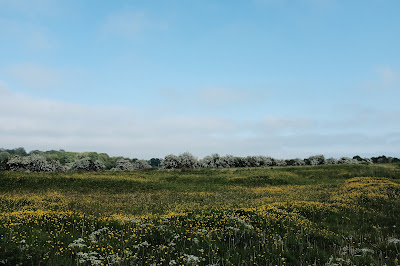A mythogeographic walk and tanglewood tale about Walesby in the Lincolnshire Wolds
 I’m away on a week’s leave at the moment so I have taken the opportunity to go and stay for a few days with an old college friend of mine in Newark, Nottinghamshire. Both of us have a life-long love of the British countryside (especially that of the east of England) and have always been tramping over its plains, valleys, hills and dales and, along the way, delving not only into its obvious histories (geological, archeological, social, religious and political etc) but what might be called its “mythogeography”.
I’m away on a week’s leave at the moment so I have taken the opportunity to go and stay for a few days with an old college friend of mine in Newark, Nottinghamshire. Both of us have a life-long love of the British countryside (especially that of the east of England) and have always been tramping over its plains, valleys, hills and dales and, along the way, delving not only into its obvious histories (geological, archeological, social, religious and political etc) but what might be called its “mythogeography”.In connection with this latter way of walking and interpreting the landscape we decided to take a walk from Market Rasen north along the railway line and then, turning east, to climb up on to the Lincolnshire Wolds and walk south back to visit the village of Walesby and its magnificent 12th/13th century church on the hill, All Saints, otherwise known as the Ramblers’ Church. The countryside (the wood, plain and the wold) and church were themselves reason enough to visit but the village of Walesby was also the place where in 1969/70 the folk band “Forest” rented a cottage to write and rehearse the songs for their two albums, their eponymous first (you can hear that at this link) and their second called “Full Circle” (you can hear that at this link); indeed the cover of the latter featured both a painting and drawing of the Ramblers’ Church (you can see them both below alongside some photos of the church which I took on our visit). Here’s how Rob Young in his wonderful book Electric Eden: Unearthing Britain's Visionary Music describes Forest’s music (the section on Forest is found on pp. 397-400):
Forest’s entire oeuvre — two albums on Harvest, plus the early single ‘Searching for Shadows’ — appears to take place within a pre-urban, pre-industrial mise en scène, a mental glade damp with dew and festooned with cobwebs. . . . Forest’s tanglewood tales are maudlin and macabre. This is no Arcadia of lazy shepherds and obliging goatherds, but the emblematic landscape of Bunyan’s Pilgrim’s Progress, with its Hill of Difficulty, By-Path Meadow, Enchanted Ground and Valley of the Shadow of Death. . . Forest’s music took a walk in Britain’s ancient groves and stirred up the makeshift graves, undead warriors and spooky folk memories that had lain preserved among the toadstools and moss on the windless woodland floor.
My friend and I began our walk on the windless woodland floor that ran parallel to the railway (a veritable Heideggerian Feldweg which caused us to talk a while of his philosophy of poetic dwelling on the earth as well as stirring up some folk memories of our own) which, after a half an hour or so, gave way to the breezy plain across which we could see the may-bedecked ridge of the wolds and, in the distance to the south-east, our first glimpse of the ancient tower of All Saints watching patiently over Walesby and we two pilgrim mythogeographers. . .
All photos taken with a Fuji X100F
Just click on a photo to enlarge
































Comments